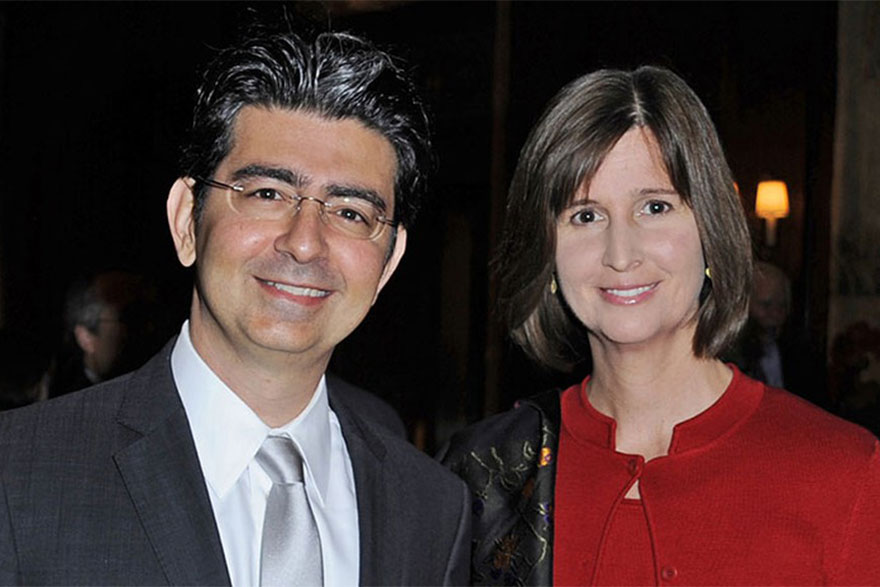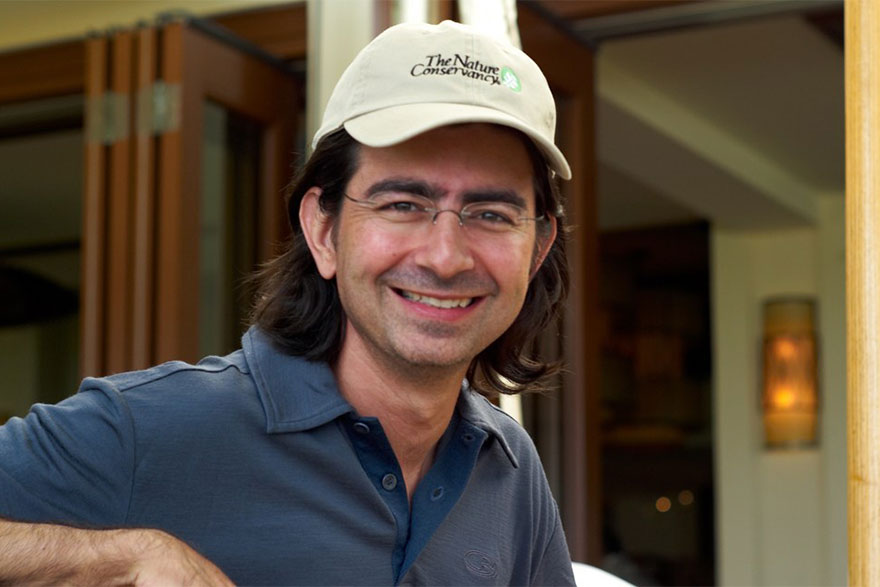Iranian-American economist Pierre Omidyar is best known as the founder and chairman of eBay, the online auction website. Omidyar graduated from Tufts University in 1988 with a degree in computer science and worked for both Macintosh and Apple before founding eBay. By the end of 1998, the company boasted 2.1 million members and generated revenue of $750 million
It was on the Labour Day weekend of 1995 that a then 28-year-old Pierre Omidyar sat down at his computer to write the code for what would become the business known today as eBay. This company, based in San Jose, California, now has 31,500 employees and revenue of $14 billion in revenue, and has made Omidyar, now eBay’s chairman, one of the world’s richest people. Of late, he has shifted the focus of his energies to philanthropy.
Through the Omidyar Group, he has donated and invested more than a billion dollars in both non- and for-profit organisations, focused on economic, social and political progress. But Omidyar is not interested in random acts of charity. Instead, he is inspired by something he discovered about leadership in the early days of eBay: if you empower others to do good, they will.

When he first started working as a software engineer, Pierre maintained extremely high standards, and often felt that those standards weren’t being met by other people. However, he gradually realised that if others on the team weren’t doing everything as perfectly as he wanted them to – if they were only getting 80 per cent of the way there – that would also be awesome. That’s because there were five of them, and five times 80 per cent far exceeds only him giving 100 per cent on his own. This realisation led him to the idea of leveraging other people: let them bring their own skills and talents to the table, and they’ll solve problems in a way that differs from him.
It was in 1991 that Pierre co-founded his first start-up: Ink Development, which made software for an early tablet computer. The company, later renamed eShop, was acquired by Microsoft in 1996. This wasn’t a huge acquisition, but it definitely increased Pierre’s appetite for risk.
Pierre realised that if others on the team weren’t doing everything as perfectly as he wanted them to – if they were only getting 80 per cent of the way there – that would also be awesome
It was during the summer of 1995 that he started thinking about the idea of building an online marketplace. He had always been interested in markets – specifically, the theory that goods will trade at a fair value on financial markets only when everyone has access to the same information. That’s a pretty cool theory, but the practise of it hit him when he had a little bit of extra money and wanted to invest in an IPO for a gaming company. The company went public at $15 a share. His broker called to tell him that he’d acquired the stock at $24 a share. When Pierre enquired as to why he’d been charged so much, his broker informed him that the ideal price of $15 was not the price for “people like you”. His takeaway from this experience was that the theory of efficient markets is really great in theory, while in practise regular people are locked out.
He then started to consider that the emerging ‘internet thing’ could be used to help bring the power of financial markets to regular people. Of course, regular people don’t sell stocks in their households – they sell stuff. Identifying a real opportunity to create a marketplace that could bring the power of efficient markets to regular people, he took that fateful step on Labour Day 1995.

About six months after he created eBay, in February 1996, Pierre began receiving a spate of complaints. Everyone was complaining about each other. He felt very much like he was a parent who had to adjudicate feuding brothers who were blaming each other for having “started it”. Pierre realised that this would be a big problem if things kept going this way. This prompted him to write a letter to the community and post it on the site, saying “I’m giving you a tool, a feedback forum. If you have an honestly bad experience with someone, post it publicly. And if you can take the time to give positive praise when someone does something good, please do that.”
It was a real experiment, and he didn’t know what to expect. However, in the days and weeks that followed, Pierre was enormously gratified to see that the vast majority of the comments coming in highlighted the good things people were doing, which went above and beyond the transactions themselves.
That experience led him to conclude that the company had to do likewise internally at eBay. Instead of telling his executives what to do, he should try to inspire them with a vision of where they are going and let them translate that in their own terms, based on their own experience and expertise. Inspiration is much more effective than delegation.
His skills were innovation and creation, but in order for all that to thrive they would need real managers, people who knew how to build big organisations
By August of that year, Omidyar started talking with his friend Jeff Skoll and persuaded him to leave a wonderful job at Knight Rider and help him build eBay. But he was never the founder-CEO type, like Bill Gates or Steve Jobs. Even in those early days, his feeling was that, together with Jeff, he would build the company to a certain point and then – if they were successful – they would bring in professional management. His skills were innovation and creation, but in order for all that to thrive they would need real managers, people who knew how to build big organisations.
It was Pierre’s idea to bring in Meg Whitman as CEO in 1998, and he felt that, with this move, they set an example of how that transition should be done. It is often the case that a founder begrudgingly takes on a more experienced CEO, but then sticks around and still tries to run the company. That wasn’t the case with eBay. He stayed at eBay for a year, to help with the transition, but from the very first day he made it clear that he was only there to advise Meg behind the scenes, while she would run the show.
As an example, at one point during the year after he left eBay, the site was down for about 22 hours. It was a disaster. What Meg decided – in a move that proved to be a key moment in her leadership – was that the company would call all of its top 10,000 sellers individually and apologise. She wanted to ensure that the company internalised the notion that it was here to serve real human beings, and that there are consequences when mistakes happens.

The company went public in 1998 and Pierre couldn’t have expected the IPO to be so successful in his wildest dreams. The shares were initially priced at $18, but had reached about $47 by the time trading closed on the first day. It was more money than he could ever use. He felt an immediate sense of huge responsibility and all he could think was that he had now become the steward of a fortune that he wanted to ensure would be put to good use.
As a new philanthropist, the available literature for guidance advises that one works through the non-profit sector. Pierre did that through 2002 and 2003, until he started feeling frustrated. He couldn’t tell exactly what it was, but he felt like the full potential wasn’t being met. That led to the formation of the Omidyar Network, which was built on his insight that having a large-scale positive impact on change in the world meant not limiting oneself to working with the nonprofit sector.
His entire approach to philanthropy is rooted in what he witnessed at eBay; the way millions of people used the platform to create their own businesses. As a philanthropist, Pierre tries to help people take ownership over their own endeavours. Everything he has done is rooted in the notion that every human being is born equally capable, with people only lacking equal opportunity. His goal has been to expand opportunities to encompass as many people as possible, so they can achieve their potential. That’s the approach they took with eBay, and it’s harder to make bad decisions when such a notion is at the forefront of one’s mind. No wonder, then, that Pierre describes his life’s mission as helping people to realise their potential.